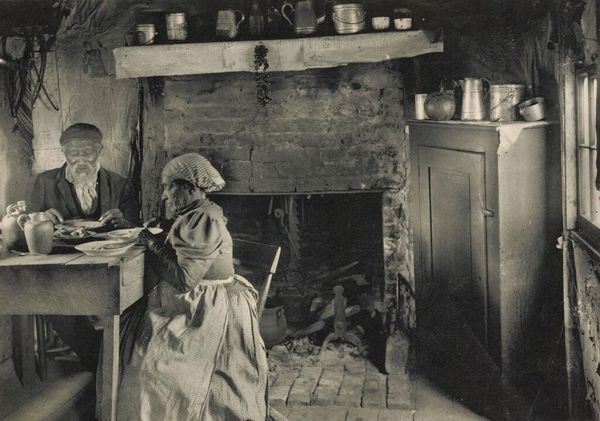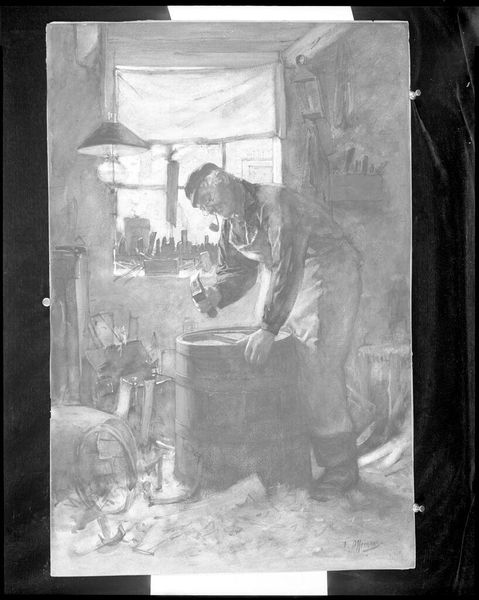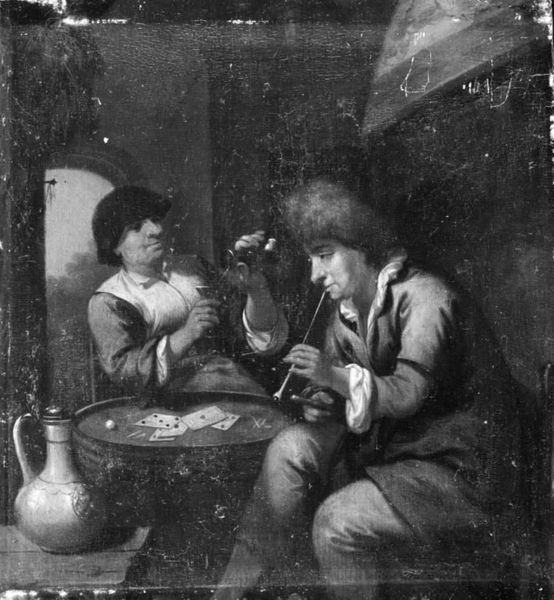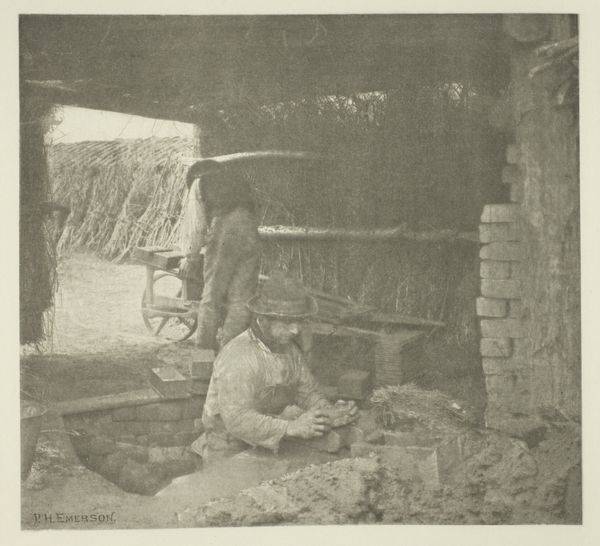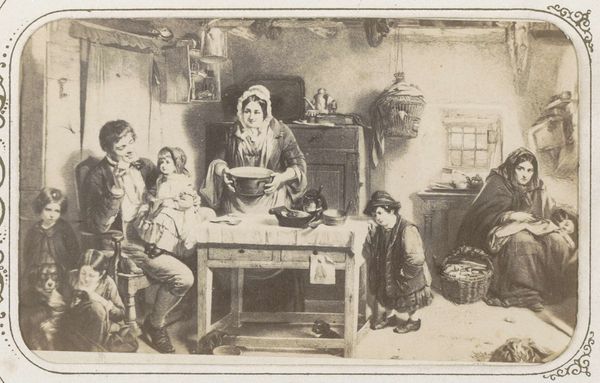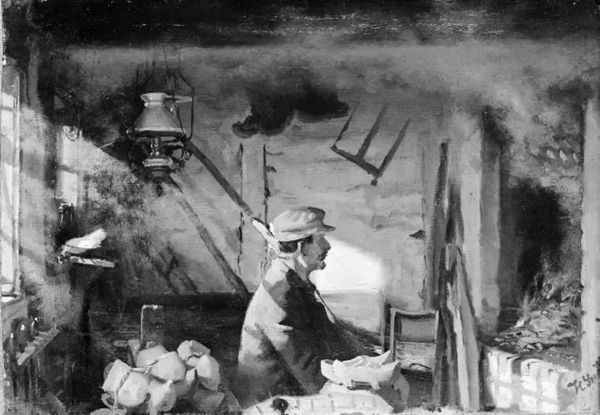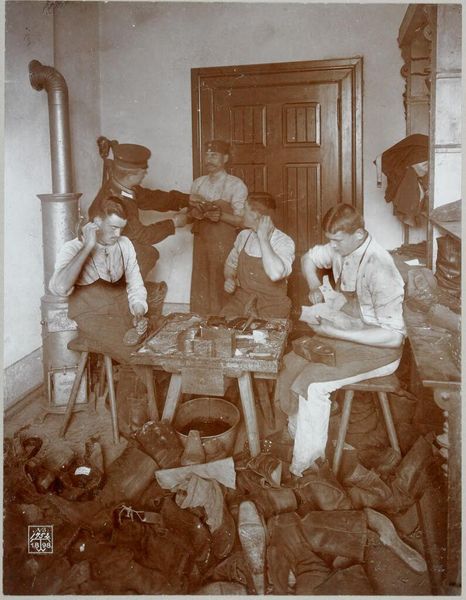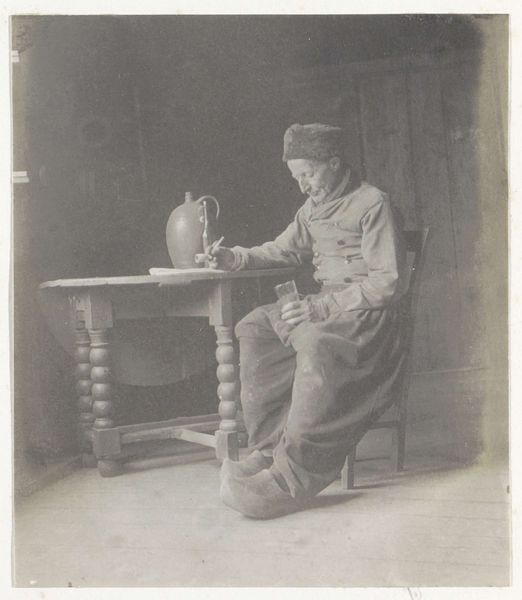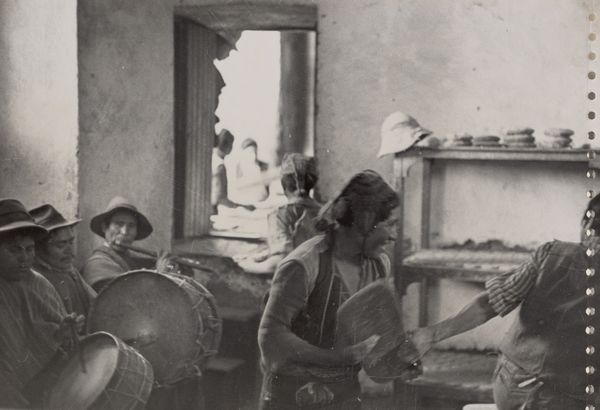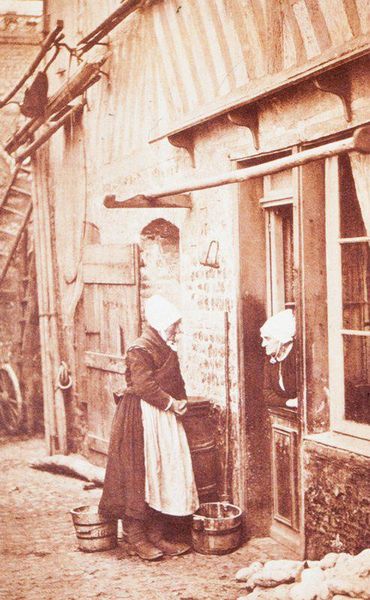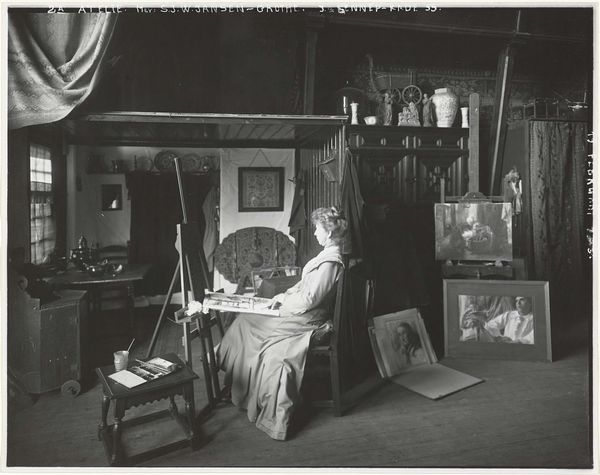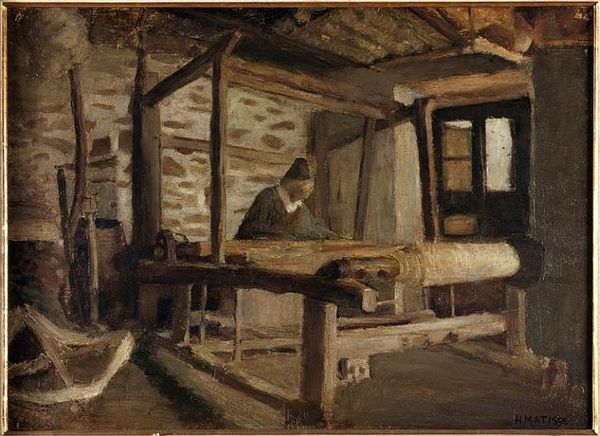
Dimensions: 63 cm (height) x 52.5 cm (width) (Netto)
Editor: This is Frederik Vermehren's "Domestic Scene in a Poor Peasant's Living-Room," painted in 1859. It looks like it was made with oils on canvas. The monochromatic palette and the stark realism give it a really somber, almost unsettling mood. What strikes you about this piece? Curator: The painting offers a fascinating look into the material conditions of peasant life in 19th-century Denmark. Notice the starkness of the interior – the rough-hewn wood, the minimal furnishings, the woman working, presumably mending, while the young girl is learning to read or is reading the scriptures. What's the relationship between labor, learning, and value in this painting? Editor: I guess it’s showing us what mattered back then: hard work and maybe the hope that literacy could improve their lives, especially for the young girl? But it's presented so plainly, almost without emotion. Curator: Exactly. Vermehren isn't romanticizing peasant life. The artist meticulously details the tools, clothing, and architecture, emphasizing the labor involved in their creation and maintenance. How do you think this realism challenges the more idealized depictions of rural life prevalent at the time? Think about how it treats "high art" with "low craft". Editor: I see what you mean. It's a far cry from idyllic landscapes. It feels almost like a document of their existence. I wonder how people reacted to seeing their own lives, so plainly depicted, in a gallery. Curator: A key consideration. By placing this scene within the established framework of fine art, Vermehren elevated the status of this everyday existence. It asks us to re-evaluate what—or rather, who—we deem worthy of representation and what labor is truly worth. Editor: That gives me a whole new perspective on it. I was caught up in the gloominess, but it's really about valuing a way of life that’s usually overlooked. Thank you! Curator: Precisely! It's about shifting the focus from the grand narratives of history to the tangible realities of ordinary people and how material culture defines them.
Comments
No comments
Be the first to comment and join the conversation on the ultimate creative platform.
